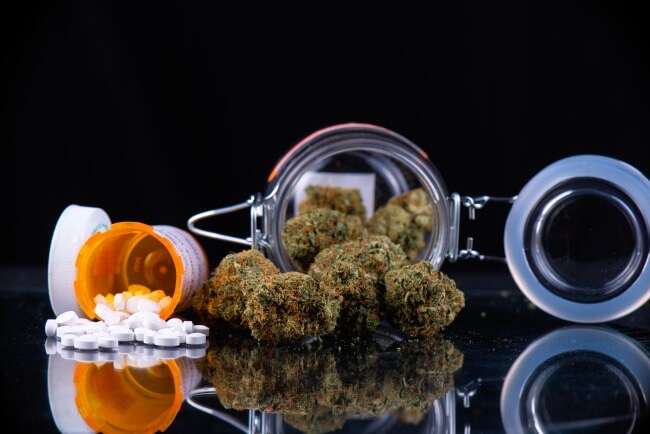In what was billed by study authors as “the first insight into marijuana and opioid use over time in people with cancer across the United States,” investigators concluded that throughout a recent 10-year period, the rate of marijuana use in patients with cancer had increased, while the use of opioids by this cohort remained relatively unchanged.1
Research has suggested that the use of marijuana for pain could potentially reduce the number of opioids that are administered, and could potentially influence the incidence of opioid overdose-related deaths. But a new study showed that even as marijuana use increased across study respondents between 2005 and 2014 — a population that included 826 people with cancer and 1652 matched controls within the United States from the National Health and Nutrition Examination Survey (NHANES) — the use of opioids for pain remained flat during this period.
The researchers found that compared with respondents who did not have cancer, those with cancer were significantly more likely to report using opioids (odd ratio [OR], 1.82; 95% CI, 1.17-2.82; P =.008). They also found that among patients with cancer, almost half (40.3%) reported using cannabis “within the past year,” whereas only 8.7% used marijuana “currently” (within 30 days of when the survey took place). The rate of cannabis use within the past year in patients with cancer was similar to the rate of use among respondents without cancer during the same time period (38%).
Prescription opioid use reports were collected from respondents as well, but these reports only measured recent opioid use, or use within 30 days of the survey date. It appears the “ever-use” variable for opioids — that is, data informing about any previous opioid exposure — was not collected by investigators. Nor were data presented on opioid use during the year prior to the survey date, making it difficult to assess if any respondents had ever used opioids during any point in their life or in the year prior, and then had stopped using drugs from this class.
Interestingly, the proportion of participants with cancer using marijuana increased 118% from the period of 2005 to 2014. In comparison, the increase in cannabis use among those without cancer during the same time was just 12.2%. The use of opioids in those with cancer versus those without cancer during this period increased from 9.6% to 14.4% and 5.0% to 7.8%, respectively.
Comparing opioid use and cannabis use is complex. Although research has demonstrated that opioid prescribing patterns are associated with the risk of opioid overdose death, very little is known about how prescribing or recommendation patterns are linked, if at all, to the risk of overdose death from cannabis. For that matter, there is uncertainty surrounding whether it is still true that no deaths have been directly linked to the use of cannabis; which was the conclusion from a comprehensive report published in 2017 by the National Academies of Science.2
Commenting on the new research, Richard Saitz, MD, MPH, of the Boston University School of Public Health and the Grayken Center for Addiction at the Boston Medical Center in Massachusetts, said, “I’m not sure that it is that informative except it does suggest that more cannabis use didn’t obviate the need for or use of opioids for pain.”
Although this observation appears to support the claim that cannabis use does not (and perhaps, would not) supplant opioid use for pain in patients with cancer — especially when one considers that a cancer diagnosis, specifically, wasn’t associated with cannabis use among individuals included in the NHANES cohort — some caveats about the comparison of the 2 substances may be worthwhile.
This article originally appeared on Cancer Therapy Advisor
